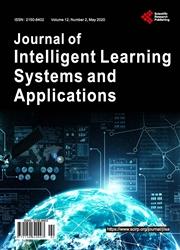Evaluation and Comparison of Different Machine Learning Methods to Predict Outcome of Tuberculosis Treatment Course
引用次数: 25
Abstract
Tuberculosis treatment course completion is crucial to protect patients against prolonged infectiousness, relapse, lengthened and more expensive therapy due to multidrug resistance TB. Up to 50% of all patients do not complete treatment course. To solve this problem, TB treatment with patient supervision and support as an element of the “global plan to stop TB” was considered by the World Health Organization. The plan may require a model to predict the outcome of DOTS therapy; then, this tool may be used to determine how intensive the level of providing services and supports should be. This work applied and compared machine learning techniques initially to predict the outcome of TB therapy. After feature analysis, models by six algorithms including decision tree (DT), artificial neural network (ANN), logistic regression (LR), radial basis function (RBF), Bayesian networks (BN), and support vector machine (SVM) developed and validated. Data of training (N = 4515) and testing (N = 1935) sets were applied and models evaluated by prediction accuracy, F-measure and recall. Seventeen significantly correlated features were identified (P CI = 0.001 - 0.007); DT (C 4.5) was found to be the best algorithm with %74.21 prediction accuracy in comparing with ANN, BN, LR, RBF, and SVM with 62.06%, 57.88%, 57.31%, 53.74%, and 51.36% respectively. Data and distribution may create the opportunity for DT out performance. The predicted class for each TB case might be useful for improving the quality of care through making patients’ supervision and support more case—sensitive in order to enhance the quality of DOTS therapy.不同机器学习方法预测结核病治疗过程结果的评估与比较
完成结核病疗程对于保护患者避免因耐多药结核病而导致的长期感染、复发、延长治疗时间和更昂贵的治疗至关重要。多达50%的患者未能完成疗程。为了解决这一问题,世界卫生组织考虑将患者监督和支持下的结核病治疗作为“遏制结核病全球计划”的一个组成部分。该计划可能需要一个模型来预测DOTS治疗的结果;然后,可以使用该工具来确定提供服务和支持的强度。这项工作最初应用并比较了机器学习技术来预测结核病治疗的结果。通过特征分析,采用决策树(DT)、人工神经网络(ANN)、逻辑回归(LR)、径向基函数(RBF)、贝叶斯网络(BN)和支持向量机(SVM)等6种算法建立模型并进行验证。采用训练集(N = 4515)和检验集(N = 1935)的数据,通过预测精度、F-measure和召回率对模型进行评价。鉴定出17个显著相关特征(P CI = 0.001 - 0.007);与ANN、BN、LR、RBF和SVM的预测准确率分别为62.06%、57.88%、57.31%、53.74%和51.36%相比,DT (C 4.5)算法的预测准确率为74.21。数据和分布可能为DT的表现创造机会。对每个结核病病例的预测分类可能有助于提高护理质量,使患者的监督和支持更加区分病例,从而提高DOTS治疗的质量。
本文章由计算机程序翻译,如有差异,请以英文原文为准。
求助全文
约1分钟内获得全文
求助全文

 求助内容:
求助内容: 应助结果提醒方式:
应助结果提醒方式:


